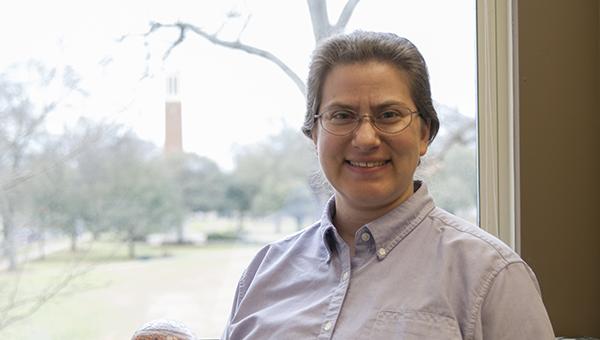Dawn Williams, an associate professor in the department of physics and astronomy, was named the February 2015 Female Physicist of the Month by the American Physical Society’s Committee on the Status of Women in Physics. Williams has been at The University of Alabama since 2008 and also helps runs the Women in Physics group on campus.
Naoko Kurahashi-Neilson, her colleague and an assistant physics professor at Drexel University, and Donglian Xu, a graduate student studying physics who works under Williams, said they nominated her for the award because of her excellent mentoring. Williams specializes in particle astrophysics, the study of high-energy particles coming from objects in space.
“I’ve been interested in astronomy as long as I can remember, literally since I was in elementary school,” Williams said.
Williams received her undergraduate degree at the University of Southern California, earned her doctoral degree at UCLA and completed four years of postdoctoral work at Penn State. While at Penn State, Williams began working with a project called IceCube, a neutrino detector.
Neutrinos have almost no mass and are extremely hard to detect. The simplest way to find and study these particles is to give them a big target – the more opportunities a neutrino has to interact with the target, the more likely it is to do so. IceCube uses a large amount of ice in the South Pole as its target. The detector notes when the rare occurrences happen and transmits the data to be analyzed by physicists.
Xu and James Pepper, a graduate student studying in physics, spoke highly of Williams.
“Donglian and I first [saw] Professor Williams at a presentation she was giving on IceCube and afterwards both became very interested in the [IceCube] project,” Pepper said.
Xu and Pepper said Williams communicates clearly and gets directly to the core of a concept. Xu said she shares interests with Williams.
“After graduation I would like to join IceCube,” she said. “It has been successful and is a cool experiment.”
Williams said there are plans for an IceCube expansion, which could provide scientists with more useful data.
“We are currently working on building an even larger detector and also a dense detector in the middle of IceCube,” she said.









